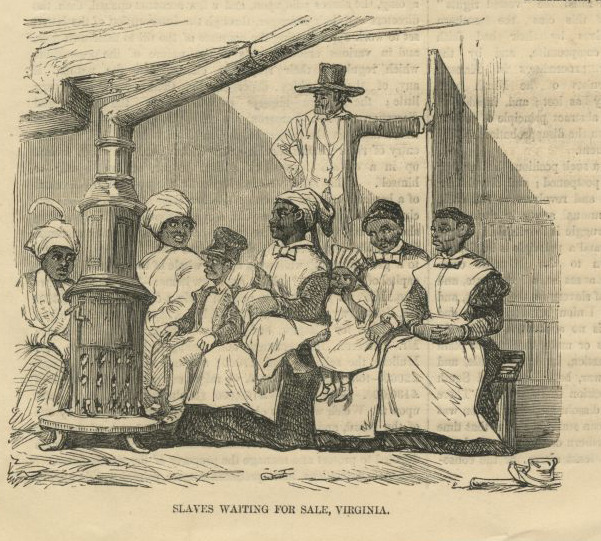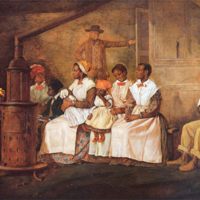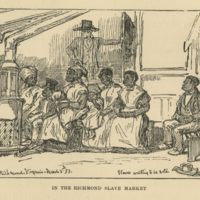Waiting for Sale
When Crowe exhibited Slaves Waiting for Sale, Richmond, Virginia, in London in 1861, critics were struck by what they saw as the picture’s accuracy. Instead of representing the well-known moment of the auction, in this painting, Crowe sought to convey the depth and complexity of the horrors of slavery by presenting an entirely different scene: the moments before the auction. By choosing to represent slaves waiting to be sold rather than slaves being sold, Crowe forced viewers to think about the emotional moments before the sale and to consider the uncertainty faced by these individuals. By leaving their fate ambiguous, Crowe intended to unsettle viewers and generate an emotional response to the plight of the enslaved.


